
Response to the survey on the selection of options for the modification of Míru Square in Jindřichův Hradec
The Historic Square as a Symbiosis of the Past and Present
In the context of historical towns in the Czech Republic, Jindřichův Hradec undoubtedly ranks among the more significant ones and, as such, it is more closely observed in terms of architectural form. The square has largely lost its ancient character due to two fires that struck the town in 1773 and 1801, but it still preserves its genius loci. Heritage preservation in the 1960s took care of the breaching of the original peripheral arcade at least in the northern part of the square, where one of the best-preserved burgher houses, known as the "Langr House," is located, which moreover bears on its façade the original rich sgraffito decoration. The natural dominant feature of the square, the late Baroque column of the Assumption of the Virgin Mary from the second half of the 18th century, is another historical monument that, despite the extensive devastation of the Hradec square, helped maintain the appearance of historicity. The remainder of the square, particularly the façades, is predominantly the result of renovations in the 19th and early 20th centuries.
Náměstí Míru in Jindřichův Hradec is simply a living organism, encompassing many historical layers within it. This is, after all, the character of any urban historical development, and one can see very few places where a town or part of it appears in a stylistically pure form untouched by the present. This square lives and evolves alongside its inhabitants, and its appearance should be the result of a positive symbiosis of the past and present. The square's space must serve the residents well, and these residents, along with their elected representatives, should also care for the best possible management in terms of heritage preservation and architectural form, which attracts tourists to visit, who are and will increasingly become one of the important conditions for the economic stability of the city.
As a positive fact, we assess that the city hall of Jindřichův Hradec has begun to address the appearance of its main square, which is a natural focal point not only of history but also of cultural and social activities of the city's residents. In the last two years, significant progress has been made in this regard, evident in the fact that after discussions lasting nearly a decade and a half, it was possible, within a compromise solution, to remove parking spots from one half of the square. On the other hand, we question the method of testing individual variants that led to this decision. We miss arguments in the entire transportation solution process that could provide analyses of capacity and broader relationships in the whole area. The resolution of Náměstí Míru thus begins to fragment gradually and raises another unfortunate question about what to do with the open space created by parked cars.
This is what the currently ongoing selection process is trying to address. According to information from the city hall, which has been posted on the official website of the town since Wednesday, ten design offices have been approached, both directly from the region and randomly from across the country, to create a project modifying the square, particularly concerning the furniture. The total value of the contract should not exceed two million Czech crowns, as reported by Jindřichohradecký deník, which is a more than low budget. A specialized commission composed of representatives from the city hall, the National Heritage Institute, and the South Bohemian Chamber of Commerce has been presented with five proposals. The commission agreed on two, which are now published for the residents to choose the winning one. According to information provided to us by Hana Novotná, a heritage expert and a member of the mentioned commission, a single criterion was not decisive in the selection process. Each member reportedly selected according to their own focus. Both proposals presented to the public for evaluation are thus the result of the majority consensus of the commission members. Allowing citizens to decide on the final solution in a general internet poll unfortunately demonstrates political alibism and the incompetence of the city council.
The city should talk to the citizens at the beginning. Through discussions and workshops, it should define what people want, what should take place in the square, and what purposes it should serve. This should also be facilitated by surveys and voting. Such public opinion research could then play a crucial role in formulating the brief for the competition. The final proposal selected by a professional, and if possible, an independent jury can then be commented on by the people, but they should not have the option to decide on the winner, as it is too specialized an issue.
Here, we will briefly attempt to outline the character of both final projects as we perceive them based on the submitted materials. In terms of the quality of the material submitted for review, study No. 5 seems to be better. At first glance, it has a more attractive and comprehensible visualization, and it is also positive that its presenters decided to write a brief introduction explaining their intentions. In contrast, study No. 3 appears careless, and based solely on the visual appendices, a layman can only with great difficulty imagine how the square would actually look. Translated into the reality of a university student, example No. 5 could be rated as a successfully presented seminar paper, while example No. 3 could be found to have many formal deficiencies. In our opinion, however, the quality of a project should not be judged based on the quality of the PDF presentation, which unfortunately the evaluation tends to encourage.
In reality, the two selected final proposals are far from achieving an adequate professional standard in both formal and content aspects. The solutions proposed by the studies lack sufficient arguments and come across as very random. Instead of simplifying the square's space and enabling its universal use, they introduce a number of pedestrian barriers that instead complicate the operation of the square. The aesthetics of the elements of furniture used in neither case respects the square's genius loci. Whether it is the kitsch historical elements of public lighting in one case, or the contemporary-looking lamps and benches lacking any elegance in the other. The multiplicity and expressive inconsistency of the proposed furniture elements do not serve the historical face of the square; rather, they overshadow it.
The dismal level of the submitted proposals undoubtedly stems from a poorly prepared brief, the conditions of which have still not been published anywhere. It is unclear by what criteria the city invited the individual designers, nor is there access to the minutes from the meeting of the working group that made the decisions. Such a protocol should indeed provide reasons for why the commission decided the way it did. Therefore, it is difficult to argue against arguments we do not know. All these questions are absolutely fundamental, and it is a mistake on the part of the city not to have published such documents.
Finally, it is not very clear what the city actually wants to solve with the current "competition." If it has only two million crowns for the implementation of the current intention, the brief should indeed have been strictly limited only to furniture. While the submitted designs appear to be solutions for the revitalization of the square, their content does not correspond at all, and unfortunately, they do not address the mentioned furniture elements in adequate detail. In our opinion, the most appropriate solution would be to commission a comprehensive conceptual study for the revitalization of the square, which would also mean rejecting the traffic solution from 2015. Only a comprehensive conceptual approach would yield a sufficiently high-quality, conceptually strong, and consistently detailed study, which could serve as a basis for acquiring funds for its implementation.
In recent days, the city has responded on its website to the question of why an architectural competition was not organized. We feel an urgent need to clarify a number of mystifying claims. The Czech Chamber of Architects assesses the regularity of competition conditions, namely whether they are in accordance with its Competition Rules. However, it is not true that the chamber nominates its so-called "well-paid independent representatives" and that it sets the amount of rewards. It is precisely the organizer—i.e., the city—that determines the prize amounts and appoints dependent and independent members to the jury. In a regular competition, it is then necessary to ensure objectivity with a majority of independent members.
In our opinion, the city of Jindřichův Hradec has reached a stage that is a great starting point for resolving such a complicated situation. The only logical solution now is to step back from the problem, view it from above, and seek to gather as much information as possible and draw inspiration from positive examples, of which there are countless throughout the Czech Republic. Councilors, representatives, and city officials can certainly travel outside of Hradec and visit places like Vodňany, Kadaň, Brno, Litomyšl, Telč, Třebíč, Znojmo, Olomouc, Plzeň, etc. In all of these places, in recent years, councilors and representatives have struggled with the same issues and have resolved them more or less successfully. The magazine Smart Cities has surely been available to city officials, in which they were regularly informed about how public contracts of a similar nature are successfully tackled.
There are many positive examples, and there are also more than enough qualified architects and designers in the Czech Republic. Their motivation is precisely the reputation of the Czech Chamber of Architects, which will speak to the regularity of the assigned competition. If Jindřichův Hradec wants to demonstrate that it is truly interested in a quality architectural solution for its main square, it should do only one thing at this time. Scrape off what it has presented and embark on the path of an architectural competition.
More information >
In the context of historical towns in the Czech Republic, Jindřichův Hradec undoubtedly ranks among the more significant ones and, as such, it is more closely observed in terms of architectural form. The square has largely lost its ancient character due to two fires that struck the town in 1773 and 1801, but it still preserves its genius loci. Heritage preservation in the 1960s took care of the breaching of the original peripheral arcade at least in the northern part of the square, where one of the best-preserved burgher houses, known as the "Langr House," is located, which moreover bears on its façade the original rich sgraffito decoration. The natural dominant feature of the square, the late Baroque column of the Assumption of the Virgin Mary from the second half of the 18th century, is another historical monument that, despite the extensive devastation of the Hradec square, helped maintain the appearance of historicity. The remainder of the square, particularly the façades, is predominantly the result of renovations in the 19th and early 20th centuries.
Náměstí Míru in Jindřichův Hradec is simply a living organism, encompassing many historical layers within it. This is, after all, the character of any urban historical development, and one can see very few places where a town or part of it appears in a stylistically pure form untouched by the present. This square lives and evolves alongside its inhabitants, and its appearance should be the result of a positive symbiosis of the past and present. The square's space must serve the residents well, and these residents, along with their elected representatives, should also care for the best possible management in terms of heritage preservation and architectural form, which attracts tourists to visit, who are and will increasingly become one of the important conditions for the economic stability of the city.
As a positive fact, we assess that the city hall of Jindřichův Hradec has begun to address the appearance of its main square, which is a natural focal point not only of history but also of cultural and social activities of the city's residents. In the last two years, significant progress has been made in this regard, evident in the fact that after discussions lasting nearly a decade and a half, it was possible, within a compromise solution, to remove parking spots from one half of the square. On the other hand, we question the method of testing individual variants that led to this decision. We miss arguments in the entire transportation solution process that could provide analyses of capacity and broader relationships in the whole area. The resolution of Náměstí Míru thus begins to fragment gradually and raises another unfortunate question about what to do with the open space created by parked cars.
This is what the currently ongoing selection process is trying to address. According to information from the city hall, which has been posted on the official website of the town since Wednesday, ten design offices have been approached, both directly from the region and randomly from across the country, to create a project modifying the square, particularly concerning the furniture. The total value of the contract should not exceed two million Czech crowns, as reported by Jindřichohradecký deník, which is a more than low budget. A specialized commission composed of representatives from the city hall, the National Heritage Institute, and the South Bohemian Chamber of Commerce has been presented with five proposals. The commission agreed on two, which are now published for the residents to choose the winning one. According to information provided to us by Hana Novotná, a heritage expert and a member of the mentioned commission, a single criterion was not decisive in the selection process. Each member reportedly selected according to their own focus. Both proposals presented to the public for evaluation are thus the result of the majority consensus of the commission members. Allowing citizens to decide on the final solution in a general internet poll unfortunately demonstrates political alibism and the incompetence of the city council.
The city should talk to the citizens at the beginning. Through discussions and workshops, it should define what people want, what should take place in the square, and what purposes it should serve. This should also be facilitated by surveys and voting. Such public opinion research could then play a crucial role in formulating the brief for the competition. The final proposal selected by a professional, and if possible, an independent jury can then be commented on by the people, but they should not have the option to decide on the winner, as it is too specialized an issue.
Here, we will briefly attempt to outline the character of both final projects as we perceive them based on the submitted materials. In terms of the quality of the material submitted for review, study No. 5 seems to be better. At first glance, it has a more attractive and comprehensible visualization, and it is also positive that its presenters decided to write a brief introduction explaining their intentions. In contrast, study No. 3 appears careless, and based solely on the visual appendices, a layman can only with great difficulty imagine how the square would actually look. Translated into the reality of a university student, example No. 5 could be rated as a successfully presented seminar paper, while example No. 3 could be found to have many formal deficiencies. In our opinion, however, the quality of a project should not be judged based on the quality of the PDF presentation, which unfortunately the evaluation tends to encourage.
In reality, the two selected final proposals are far from achieving an adequate professional standard in both formal and content aspects. The solutions proposed by the studies lack sufficient arguments and come across as very random. Instead of simplifying the square's space and enabling its universal use, they introduce a number of pedestrian barriers that instead complicate the operation of the square. The aesthetics of the elements of furniture used in neither case respects the square's genius loci. Whether it is the kitsch historical elements of public lighting in one case, or the contemporary-looking lamps and benches lacking any elegance in the other. The multiplicity and expressive inconsistency of the proposed furniture elements do not serve the historical face of the square; rather, they overshadow it.
The dismal level of the submitted proposals undoubtedly stems from a poorly prepared brief, the conditions of which have still not been published anywhere. It is unclear by what criteria the city invited the individual designers, nor is there access to the minutes from the meeting of the working group that made the decisions. Such a protocol should indeed provide reasons for why the commission decided the way it did. Therefore, it is difficult to argue against arguments we do not know. All these questions are absolutely fundamental, and it is a mistake on the part of the city not to have published such documents.
Finally, it is not very clear what the city actually wants to solve with the current "competition." If it has only two million crowns for the implementation of the current intention, the brief should indeed have been strictly limited only to furniture. While the submitted designs appear to be solutions for the revitalization of the square, their content does not correspond at all, and unfortunately, they do not address the mentioned furniture elements in adequate detail. In our opinion, the most appropriate solution would be to commission a comprehensive conceptual study for the revitalization of the square, which would also mean rejecting the traffic solution from 2015. Only a comprehensive conceptual approach would yield a sufficiently high-quality, conceptually strong, and consistently detailed study, which could serve as a basis for acquiring funds for its implementation.
In recent days, the city has responded on its website to the question of why an architectural competition was not organized. We feel an urgent need to clarify a number of mystifying claims. The Czech Chamber of Architects assesses the regularity of competition conditions, namely whether they are in accordance with its Competition Rules. However, it is not true that the chamber nominates its so-called "well-paid independent representatives" and that it sets the amount of rewards. It is precisely the organizer—i.e., the city—that determines the prize amounts and appoints dependent and independent members to the jury. In a regular competition, it is then necessary to ensure objectivity with a majority of independent members.
In our opinion, the city of Jindřichův Hradec has reached a stage that is a great starting point for resolving such a complicated situation. The only logical solution now is to step back from the problem, view it from above, and seek to gather as much information as possible and draw inspiration from positive examples, of which there are countless throughout the Czech Republic. Councilors, representatives, and city officials can certainly travel outside of Hradec and visit places like Vodňany, Kadaň, Brno, Litomyšl, Telč, Třebíč, Znojmo, Olomouc, Plzeň, etc. In all of these places, in recent years, councilors and representatives have struggled with the same issues and have resolved them more or less successfully. The magazine Smart Cities has surely been available to city officials, in which they were regularly informed about how public contracts of a similar nature are successfully tackled.
There are many positive examples, and there are also more than enough qualified architects and designers in the Czech Republic. Their motivation is precisely the reputation of the Czech Chamber of Architects, which will speak to the regularity of the assigned competition. If Jindřichův Hradec wants to demonstrate that it is truly interested in a quality architectural solution for its main square, it should do only one thing at this time. Scrape off what it has presented and embark on the path of an architectural competition.
Martin Vaněk, art historian and curator of visual arts born in Jindřichův Hradec
Matěj Šebek, architecture student born in Jindřichův Hradec
Matěj Šebek, architecture student born in Jindřichův Hradec
More information >
The English translation is powered by AI tool. Switch to Czech to view the original text source.

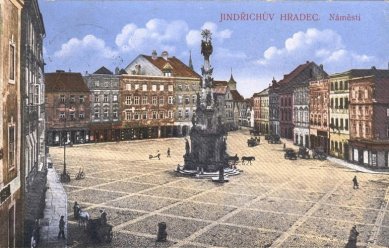

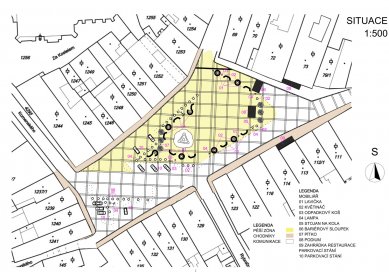
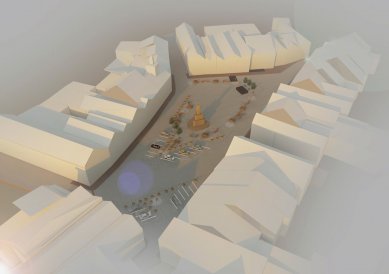
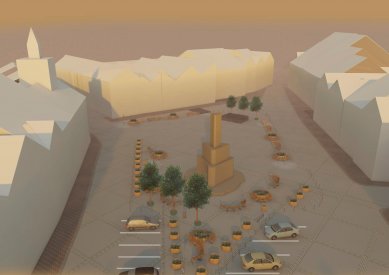
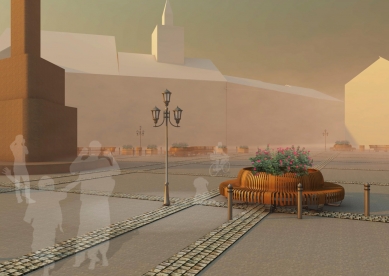
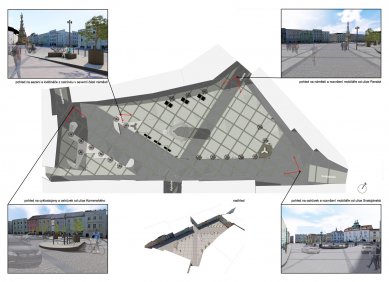
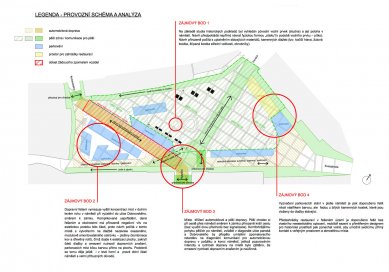
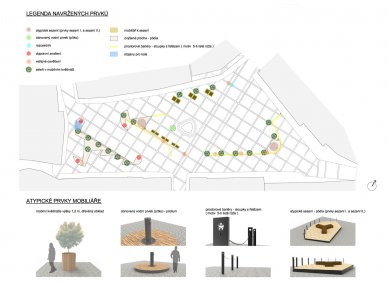


0 comments
add comment
Related articles
0
24.02.2017 | Petition for Quality Solutions for Peace Square in Jindřichův Hradec
0
22.11.2011 | J. Hradec will open a large cultural complex in January
0
03.02.2009 | Jindřichův Hradec will repair the street in the urban heritage conservation area
0
16.04.2008 | The historical town of the year 2007 is Jindřichův Hradec











